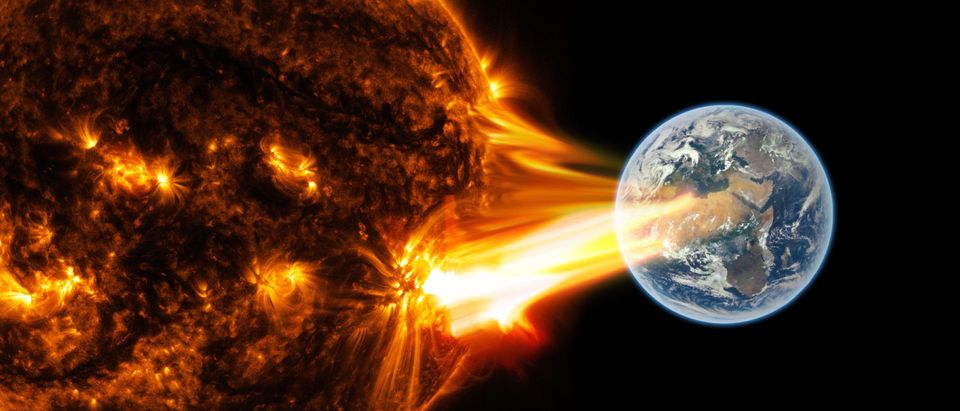A series of huge solar flares was unleashed Tuesday, leading some to blame our local star for the total shutdown of U.S. domestic air traffic for several hours.
Our sun spat out at least three powerful X-class solar storms in the last week, all stemming from a newly developing sunspot, according to Space. The blasts, which were angled at Earth, hurled debris and radiation into space with enough strength to disrupt radio transmissions in the South Pacific, SpaceWeather reported. X-class blasts are the largest types of solar events, but those we’ve experienced in January have, thankfully, been on the lower end of the strength-spectrum.
Some folks surfaced online suggesting that the Federal Aviation Agency’s technical glitch that led to total domestic flight cancellations on Tuesday resulted from enormous solar storms. While solar storms have more than enough power to upset a lot more than air traffic, plenty of evidence suggests that Tuesday’s flight disruptions were just a technical error.
The FAA confirmed that the issue was related to the Notice to Air Missions System, which informs pilots of issues along their flight paths, according to CNN. We can’t blame solar storms for global disruptions this week, but we should be taking these events very, very seriously, because they could lead to total societal collapse in the very near future.
The Sun emitted a strong solar flare on Jan 5, 2023, peaking at 7:57 p.m. ET. NASA’s Solar Dynamics Observatory captured an image of the event, which was classified as X-class. https://t.co/fDYUDg57T0 pic.twitter.com/njXe8ZJGMH
— NASA Sun & Space (@NASASun) January 6, 2023
The strongest solar storms and flares have the potential to destroy absolutely every piece of electrical equipment on the planet, and they almost certainly will in the future. Don’t believe me? Watch this brilliantly crafted research video from “The Why Files” on solar storms.
Imagine yourself going to bed in the 21st century and waking up in the dark ages, unable to access money, transport, the internet, your hard drives wiped into non-existence, all global communication collapsed, no ability to go to a store and buy food, get your medication, or even access GPS. That’s what will happen when the next cataclysmic solar storm hits our tiny little planet.
The most notable solar storm is referred to as the Carrington Event, which occurred in 1859. During this massive solar storm, telegraph equipment and communications across the planet went haywire, sparking and spitting, sometimes working while not being attached to any Earth-bound grid, and then burning out until they were unusable.
The Carrington Event created an aurora that was visible as far south as the topics, Space noted in another article. It forced the world into radio silence as communications failed on every continent.
When high classification solar flares and storms occur, the sun only gives us a short (like, maybe 30-minute) warning. (RELATED: Scream About ‘Ancient Apocalypse’ At Your Own Peril, Illiberal Idiots)
The next solar maximum (heightened risk of solar storms/flares) is expected between 2023 and 2026, according to the Eos. More solar storms are expected over the coming weeks, Space noted. There might not be any need to panic right now, but mankind should be preparing for the worst and praying for the best.
Let’s be honest though, if you’re not storing food and water at home, you’ve not been reading my articles on the instability of our current social structures.


